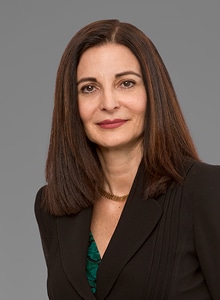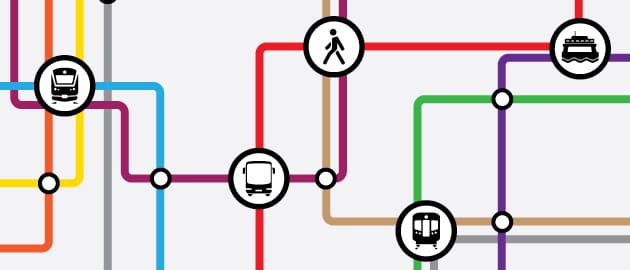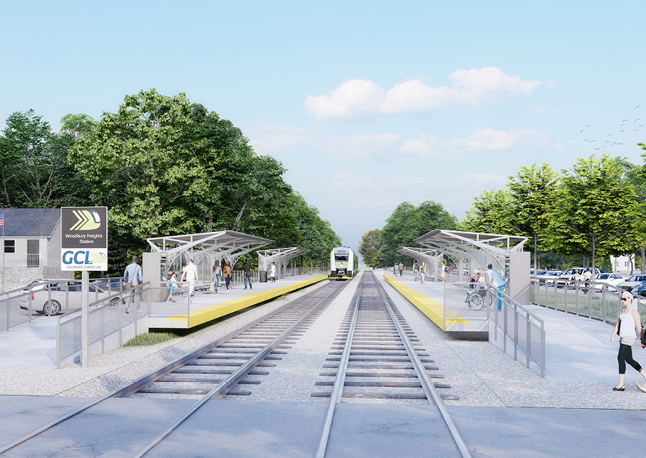As transit planners, working with our clients and community stakeholders to create more equitable access to public transportation – regardless of race, gender, age, or income level – is central to who we are and what we do. Whether it is preparing an environmental impact statement (EIS) for a proposed light rail line or bus depot renovation, or an analysis of how service or fare changes impact transit-dependent communities, STV has played a key role in shaping transit equity projects for years.
When the COVID-19 pandemic hit last year, it had a profound effect on our public transportation network, placing a renewed focus on transit equity and access in both the near-term and the future.
Following the onset of the pandemic in the United States, bus and passenger rail ridership in some major metropolitan areas decreased by as much as 80 percent. This was a shock to the system for transit agencies, leading to a catastrophic decline in revenues. As a result, many operators needed to reduce, or in some instances, eliminate services that had become lifelines for residents and workers. These bus and passenger rail services connect people to businesses, schools, churches, stores, and other major venues. Throughout the pandemic, service cuts have impacted the communities who need transit most – essential and front line workers where working from home is not an option, or individuals and families whose only options for traveling to work or grocery shopping are trains or buses.
Since 2018, the Federal Transit Administration (FTA) has required transit agencies to conduct a Service and Fare Equity (SAFE) analysis for service changes lasting more than 12 months that meet certain FTA thresholds, or fare adjustments that last at least six months. The goal of these analyses is to determine if service changes or fare adjustments are discriminatory or inequitable to people of color or those with low incomes.
Given the wide range of impacts the COVID-19 pandemic has had on many transit agencies, conducting SAFE analyses has never been more important. In Connecticut, STV is performing a SAFE analysis on behalf of the Connecticut Department of Transportation (CTDOT). As part of this analysis, we are evaluating rail service and fare changes that were implemented during the pandemic in 2020, as well as evaluating potential fare and service changes to bus and rail systems for 2021. Each fare and service equity analysis is being conducted using methods for quantifying impacts that comply with the Title VI policies of the FTA and CTDOT.
Connecticut has major employment centers in cities like Hartford, Bridgeport, Stamford, and Norwalk. It is essential for CTDOT to use the information collected from the SAFE analysis to navigate the remainder of the pandemic, as well as determine the appropriate level of service that should be reintroduced as more employees return to work and ridership moves closer to pre-pandemic levels.
STV’s extensive transit planning experience, in addition to our SAFE analyses capabilities, benefit our clients and the communities they serve. Our transit planners understand bus and passenger rail from multiple angles. With a vast knowledge of operations planning, we help agencies during this uncertain time account for and adjust to fluctuations in ridership and evolving commuting trends. In certain instances, we’re finding solutions that can help agencies adjust to new ridership trends to accommodate the growing numbers of people returning to transit. These solutions include optimizing headways while lowering operating and maintenance costs. We also use station modeling and other simulation software to better understand boarding and alighting flows, circulation, and access to transit – all critical issues in light of the challenges agencies have faced during the pandemic.
We anticipate that this new paradigm will inform and transform much of our planning work going forward. And since transit equity has already been a pivotal part of what we’ve been doing for years, we can continue to help our clients overcome new challenges in a way that benefits entire communities.


Stamatia “Tammy” Petsios, LEED AP, is an STV vice president and Northeast planning director. Over the past 30 years, she has led the development of environmental studies for projects and programs that have helped transform New York City’s transportation network.
John Manzoni, AICP, is an associate and senior transportation planner with more than 20 years of experience supporting the development of transit and transportation initiatives throughout the United States.






